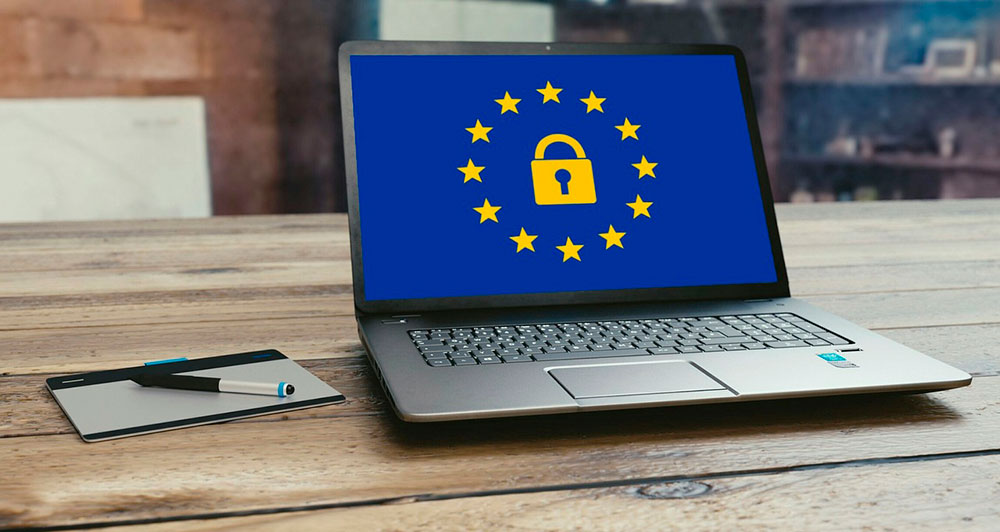Protecting customer data has become an increasing challenge for fintechs, such as online lenders, digital banking providers, robo-advisors, digital brokers, etc.
Conversely, many regulations can sometimes make compliance challenges, but a Data Protection Compliance Checklist is always a good idea. It helps build some of the best data protection practices which meet today’s industry standards.
However, remember that data compliance rules are only getting stricter over time, so in this article, we will find out what the Fintech Data Protection Compliance Checklist asks for.

What is Fintech compliance?
Fintech compliance regulates companies by providing them with solutions in the financial industry and protecting customers. As Fintech grows, its partnerships and financial industry regulations create protection for consumers and increase market competition.
However, with advancing technologies and new solutions, the regulators are credit unions, fintech companies and banks. Therefore, many regulators continuously face challenges in the developing sectors due to the rapid developments made in the fintech industry. Many startups don’t have enough capacity to comply with these regulations and that’s what might make it difficult from time to time.
Compliance strategies are always linked to talent, labor, and budget management and allocations to create the best strategy either by automation or manually.
Fintech companies will usually have similar approaches by sector. Still, they also differ structure wise, providing the right solutions for the customer and allowing you to create and implement the right compliance strategies.
As of now, the most common regulatory measures that have involved fintech have been in the following areas:
- Intellectual property
- Credit/lending
- Cyber Protection
- Data protection, etc.
The best practices regarding Fintech compliance
Under the Fintech compliance marketplace, there are several practices you can use:
- Industry and company knowledge: Create a strong compliance program and the company should identify all vulnerabilities from when they onboard customers to payment points. This ensures the approach is customized for compliance and the company’s objectives. In addition, by enforcing and creating a risk based approach, companies can innovate and scale based on all regulatory requirements.
- Consumer protection: All companies are interested in serving and protecting their consumers. Companies who aren’t concerned about consumer safety might have to face fines by either the GDPR or other data privacy regulators and trust us, these fines aren’t any small ones by any chance!
- Money laundering compliance: All companies part of the Fintech and bank industry have to comply with anti-money laundering regulations. Companies who comply will have to pay the penalty, which might not be larger than failing to comply with the GDPR or CPRA, but still large enough.
- Know your target audience: Banks and Fintech companies are usually used for criminal activities that rule out combat and fraud financing through several measures to detect and eliminate suspicious activities in the company and amongst professionals.
The GDPR, CPRA, CCPA and beyond

The biggest data privacy regulators across the globe are the General Data Protection Regulation (GDPR) and the California Privacy Rights Act (CPRA). The GDPR accounts for all businesses which operate within EU boundaries and those that aren’t residents but still conduct business inside it.
On the other hand, we have the CPRA, which accounts for all California residents and those who conduct business within Californian boundaries. However, alongside the CPRA, we also have the California Consumer Privacy Act (CCPA), which gives consumers more control over their personal information as businesses gather more of it.
Overall, many struggle to understand the CPRA and CCPA differences. In other words, they are both the same, but in a different way. As of January 1st, 2023, the CPRA will make small amendments to its privacy policy. For those organizations that do business within Californian boundaries and collect personal data, they’ll need to fit the following criteria:
- Buys, sells and shares personal data of hundreds of thousands of users and households.
- You receive more than 50% of your revenue through selling personal data.
- $25 million or more in gross revenue from January 1st,2022, to December 31st, 2023.
Furthermore, if you don’t comply with further restrictions made by the GDPR, CCPA and CPRA, there may be more consequences to face in the future. Many of these new restrictions are coming into play from 2023 from all three data privacy regulators.
However, always check up on your local privacy regulators to be clear. If you don’t understand something, you can hire a Data Privacy Officer (DPO) to help you regulate and manage personal data. It’s best to ask first and then act.
The way how to handle Customer Data Protection
You start navigating through personal customer data and realize it’s part of your daily business routine. However, what should you do to not go against data privacy regulations? To start out, you can follow these principles:
- Publish your privacy policy
- Maintain security measures
- Get rid of any misleading ads
- Always remain compliant with data privacy regulators and avoid violating the privacy framework
For the best measurements, here are some practices you can follow:
- Backup your data
- Monitor third-party access and don’t allow any unauthorized access
- Educate all of your employees regarding data protection laws
- Separately assign employee duties
- Develop a backup plan in case of an online data breach
The Fintech compliance checklist
Compliance and fintech regulations are necessary for all companies interested in growing their market revenue and share. However, keep in mind that you need to appropriately manage your customers, analysts, regulators, etc., in order to enhance the company’s objectives.
Whether you have a fintech partnership or own a company, not complying with data regulations exposes your company to three risks:
- Unpredictable risks
- Reputational risks
- Regulatory risks
Especially when a company is expanding, they need to automatically consider different regulations such as data protection, taxation and labor laws. Overall, every company must know its objectives and develop a compliance program based on them. The compliance program needs to be effective in analyzing each activity process. The training and integration automated processes are also based on the set regulations.
Furthermore, let’s dive deep and find out what the Fintech Compliance Checklist looks like:
- Preparation: Assessing the company’s vulnerabilities, developing and implementing a compliance program following regulations. Consider hiring a compliance officer to manage your program.
- Implementation: Transaction monitoring, suspicious activity reports, sanction screening solutions, customer diligence, etc.
- Compliance monitoring: Upskilling, training employees based on regulation compliance, automated process integration, scaling and managing compliance programs based on regulations.
All data breaches have consequences

Penalties are harsh when failing to comply with the necessary laws. Violations also account for this and are usually calculated based on the number of incidents. For example, if many customers are part of the violation, penalties can reach millions of dollars.
For instance, if we look at the California Consumer Privacy Act (CCPA), we will find out that it fines companies at a much higher rate once something is done intentionally compared to unintentionally. An intentional fine is around $7500 and this only accounts for one customer. Imagine how much the costs would add up if you harmed hundreds of them!
What are some popular examples of past data breaches that occurred? Well, let’s take a small look:
- Didi Global – $1.19 billion: The Chinese firm was fined by a Cyberspace Administration from China after they claimed that their network and data security law was violated.
- Amazon – $877 million: Amazon was fined by Luxembourg officials for breaching the GDPR. There isn’t a 100% confirmation of the exact reason, but it has to do with its website cookies. While some officials claim the fine was unnecessary, many also say that Amazon didn’t fully inform visitors on how they collect their data.
- Instagram – $403 million: This just recently occurred in September 2022. The Ireland Data Protection Commissioner (DPC) fined Instagram because it failed to comply with the GDPR’s child policies. This was associated with Instagram not remaining compliant regarding phone numbers and email addresses, which made their profiles too public once younger users upgraded their profiles to business accounts for accessing analytic tools.
- T-Mobile – $350 million: T-mobile was sued just this year after it had been filed for a data breach that occurred at the beginning of 2021. The data breach wasn’t small and impacted more than 75 million users! It was claimed to be associated with unauthorized access.
The summary of complying with data privacy
Data privacy has been around for some time and many organizations don’t take it too seriously. Therefore, data privacy regulators are imposing much more restrictions for you to comply with them. 2023 will be full of new restrictions to face, so be ready.
It’s best to stay informed and hire someone who can do it for you when you aren’t fully aware of new regulations.
About the author
Tony Ademi is a freelance SEO content and copywriter. He has been in the writing industry for three years and has managed to write hundreds of SEO-optimized articles. Moreover, he has written articles that have ranked #1 on Google. Tony’s primary concern when writing an article is to do extensive research and ensure that the reader is engaged until the end.